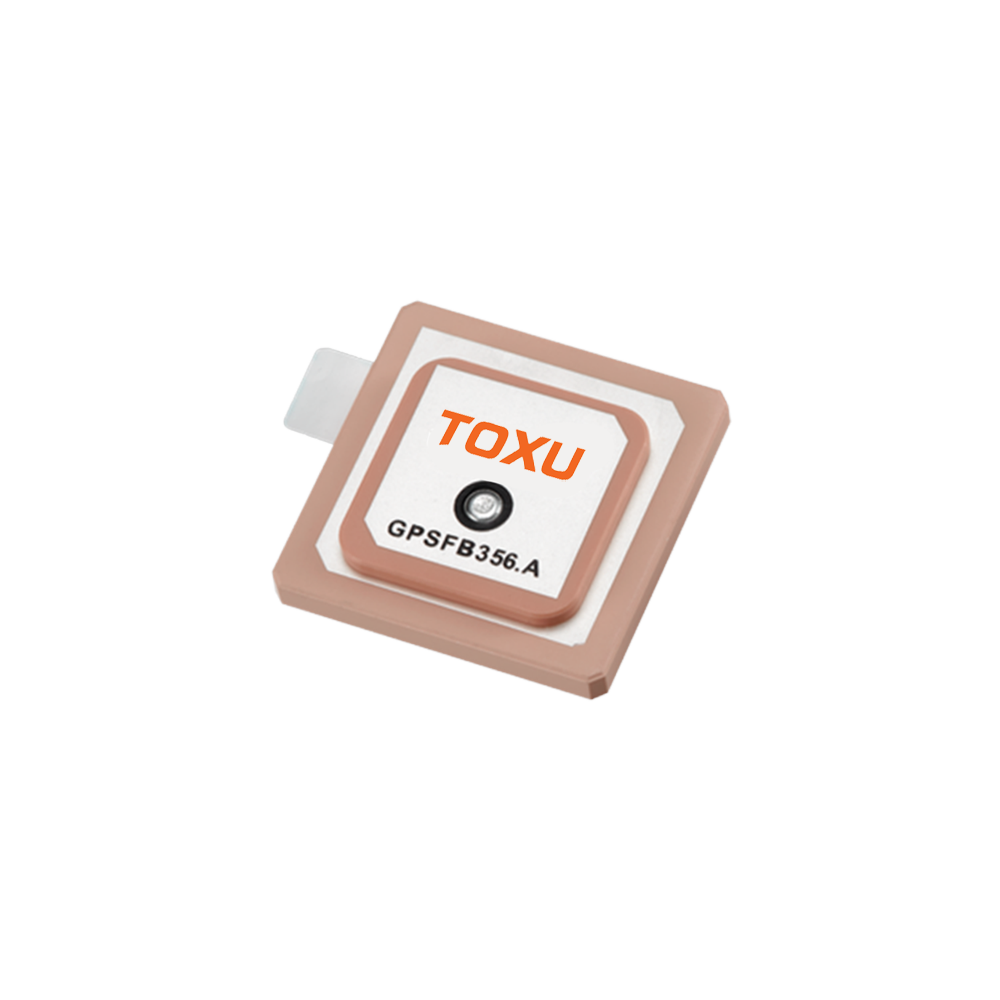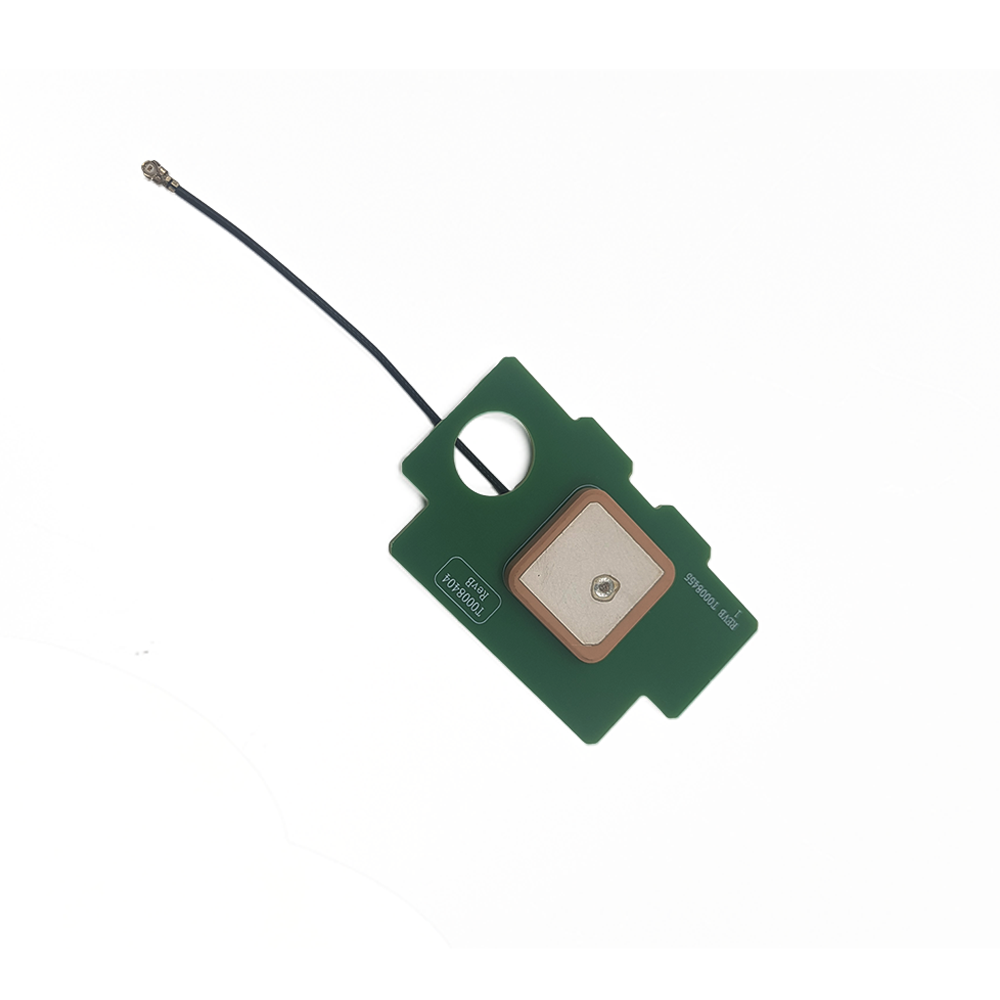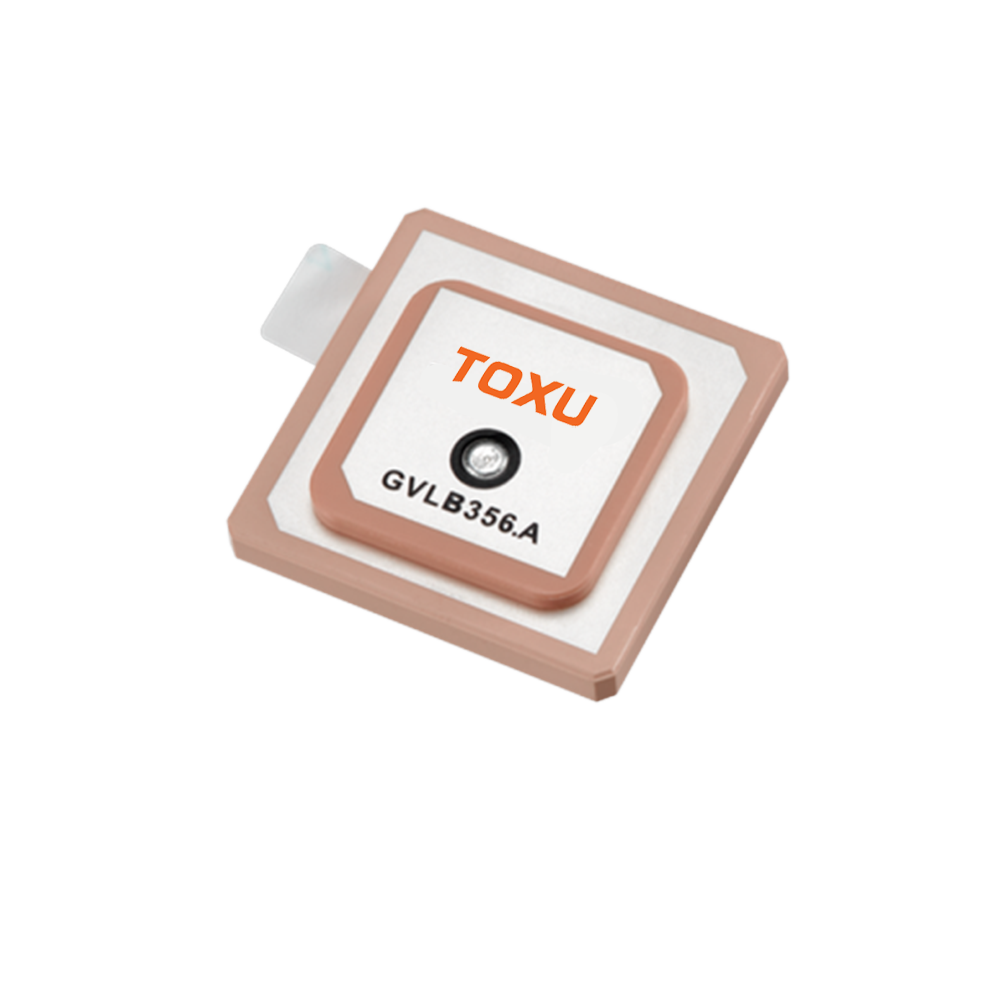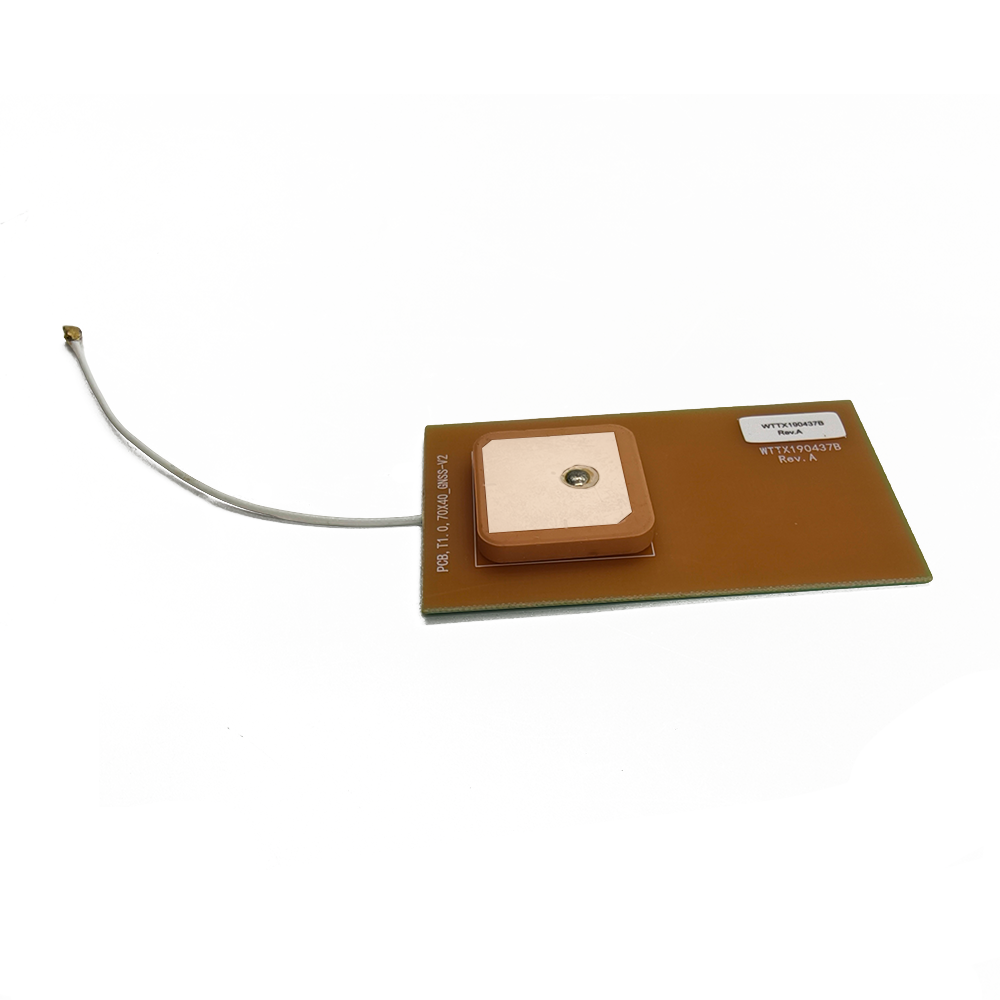Overview
Definition and Functionality
A multi-band GPS ceramic patch antenna is a type of antenna specifically designed to operate on multiple GPS frequency bands simultaneously. Traditional GPS antennas were typically single-band, focusing on the L1 frequency (1575.42 MHz). However, with advancements in GNSS technology, additional bands such as L2 (1227.60 MHz), L5 (1176.45 MHz), and even Galileo's E1 (1575.42 MHz, overlapping with GPS L1), E5a, and E5b frequencies have been introduced to improve signal integrity and positioning accuracy.
The ceramic patch antenna utilizes a ceramic substrate as its base, which provides a stable dielectric constant and low loss tangent, crucial for efficient signal reception. The patch itself, usually made of a conductive material like copper or gold, is etched or deposited onto the ceramic substrate, forming a resonant structure that can be tuned to specific frequencies.
Market Importance
The demand for multi-band GPS ceramic patch antennas has surged with the proliferation of GPS-enabled devices, ranging from smartphones and wearables to automotive navigation systems and unmanned aerial vehicles (UAVs). Their compact size, high gain, and ability to operate in harsh environments make them ideal for integration into consumer electronics, automotive, aerospace, and military applications. As GNSS technology continues to evolve, the importance of multi-band antennas in ensuring seamless connectivity and precise positioning cannot be overstated.
Technological Evolution
The journey of GPS antennas from single-band to multi-band has been driven by the need for improved accuracy and reliability. Early GPS systems relied solely on the L1 band, which was susceptible to ionospheric delays and multipath errors. The introduction of the L2 band, primarily for military use, allowed for differential corrections, significantly enhancing accuracy. The advent of the L5 band, with its wider bandwidth and improved signal structure, further boosted positioning precision and resistance to interference.
Ceramic patch antennas have evolved alongside these advancements, incorporating advanced materials and manufacturing techniques to achieve multi-band operation without compromising on size or performance. Today, state-of-the-art multi-band GPS ceramic patch antennas can simultaneously receive signals from multiple GNSS constellations, providing users with unparalleled positioning accuracy and reliability.
Design and Construction
Material Selection
The choice of materials plays a pivotal role in the design and construction of multi-band GPS ceramic patch antennas. The ceramic substrate, typically made of materials like alumina (Al2O3) or zirconia-toughened alumina (ZTA), is selected for its high dielectric constant, low loss tangent, and thermal stability. These properties ensure efficient signal propagation, minimal energy loss, and consistent performance across a wide temperature range.
The conductive patch, usually made of copper or gold, is chosen for its excellent electrical conductivity and corrosion resistance. The ground plane, often a metallic layer beneath the ceramic substrate, provides a reference potential and helps in shaping the antenna's radiation pattern.
Antenna Geometry
The geometry of the ceramic patch antenna is crucial for achieving multi-band operation. The patch is typically designed as a rectangular or circular shape, with its dimensions determined by the desired resonant frequencies. For multi-band operation, techniques like slot loading, fractal geometry, or stacked patches are employed to create multiple resonant modes within the same physical structure.
Slot loading involves cutting slots or apertures into the patch, altering its current distribution and creating additional resonant frequencies. Fractal geometry, inspired by natural fractals, utilizes self-similar patterns to achieve multi-band operation with a compact footprint. Stacked patches involve placing multiple patches at different heights above the ground plane, each tuned to a different frequency band, thereby achieving multi-band operation through spatial separation.
Feeding Mechanisms
The feeding mechanism is responsible for transferring RF energy between the antenna and the transmission line. Common feeding techniques for ceramic patch antennas include microstrip line feeding, coaxial probe feeding, and aperture coupling.
Microstrip line feeding involves connecting a microstrip transmission line directly to the patch, providing a simple and compact feeding solution. Coaxial probe feeding utilizes a coaxial connector to feed the patch, offering good impedance matching and ease of fabrication. Aperture coupling involves coupling energy from a microstrip line to the patch through an aperture in the ground plane, providing isolation between the feeding network and the patch, which can be beneficial for multi-band operation.
Manufacturing Process
The manufacturing process of multi-band GPS ceramic patch antennas involves several steps, including substrate preparation, patch fabrication, assembly, and testing. The ceramic substrate is first prepared by cutting it to the desired size and shape, followed by surface finishing to ensure a smooth and flat surface. The conductive patch is then fabricated using techniques like photolithography, screen printing, or electroplating, depending on the desired precision and complexity.
Once the patch is fabricated, it is assembled onto the ceramic substrate, along with any additional components like matching networks or filters. The antenna is then tested for its electrical performance, including resonant frequencies, impedance matching, radiation pattern, and gain, to ensure it meets the desired specifications.
Working Principles
Resonance and Impedance Matching
The fundamental working principle of a multi-band GPS ceramic patch antenna is based on resonance. When an RF signal of a frequency matching one of the antenna's resonant modes is incident on the patch, it excites surface currents on the patch, which in turn radiate electromagnetic waves into space. The resonant frequency of the antenna is determined by its physical dimensions, material properties, and feeding mechanism.
Impedance matching is crucial for efficient power transfer between the antenna and the transmission line. The input impedance of the antenna should match the characteristic impedance of the transmission line to minimize reflections and maximize power transfer. This is typically achieved through the use of matching networks, which can be integrated into the antenna design or placed externally.
Radiation Pattern and Gain
The radiation pattern of a ceramic patch antenna describes how the antenna radiates energy in space. It is typically characterized by its main lobe, side lobes, and back lobes. The main lobe represents the direction of maximum radiation, while side lobes and back lobes represent unwanted radiation in other directions. The radiation pattern is influenced by the antenna's geometry, feeding mechanism, and ground plane design.
Gain is a measure of an antenna's ability to direct or concentrate RF energy in a particular direction. It is defined as the ratio of the power radiated by the antenna in a specific direction to the power radiated by an isotropic radiator (a theoretical antenna that radiates equally in all directions) with the same input power. The gain of a ceramic patch antenna is influenced by its size, shape, and material properties, as well as the efficiency of its feeding mechanism.
Multi-band Operation
Multi-band operation in ceramic patch antennas is achieved by creating multiple resonant modes within the same physical structure. This can be done through techniques like slot loading, fractal geometry, or stacked patches, as mentioned earlier. Each resonant mode corresponds to a different frequency band, allowing the antenna to receive signals from multiple GNSS constellations simultaneously.
The ability to operate on multiple bands enhances the antenna's performance by providing redundancy and improving positioning accuracy. In scenarios where one band may be subject to interference or degradation, the antenna can switch to another band to maintain connectivity and precision.
Signal Reception and Processing
Once the RF signals are received by the antenna, they are typically processed by a GNSS receiver, which performs tasks like signal amplification, filtering, downconversion, and demodulation to extract the navigation data. The receiver then uses this data to calculate the user's position, velocity, and time (PVT) information.
The performance of the GNSS receiver is highly dependent on the quality of the signals received by the antenna. A well-designed multi-band GPS ceramic patch antenna can provide high-quality signals with low noise and interference, enabling the receiver to achieve precise and reliable PVT solutions.
Advantages and Challenges
-
Advantages
Compact Size: Ceramic patch antennas offer a compact form factor, making them ideal for integration into space-constrained devices like smartphones and wearables.
High Performance: Their high dielectric constant and low loss tangent result in efficient signal reception and high gain, improving positioning accuracy and reliability.
Multi-band Operation: The ability to operate on multiple GNSS frequency bands enhances redundancy and improves performance in challenging environments.
Durability: Ceramic materials are robust and resistant to environmental factors like temperature, humidity, and vibration, ensuring long-term reliability.
Cost-effectiveness: With advancements in manufacturing techniques, the cost of producing ceramic patch antennas has decreased, making them more accessible for a wide range of applications.
Challenges
Design Complexity: Achieving multi-band operation within a compact form factor requires sophisticated design techniques and careful optimization of antenna parameters.
Manufacturing Tolerances: Tight manufacturing tolerances are necessary to ensure consistent performance across production batches, which can increase production costs.
Interference and Noise: In multi-band operation, there is a risk of intermodulation distortion and noise coupling between different frequency bands, which can degrade signal quality.
Integration Challenges: Integrating the antenna into the device's PCB layout requires careful consideration of factors like ground plane design, component placement, and shielding to minimize interference and ensure optimal performance.
Regulatory Compliance: Compliance with international regulatory standards for RF emissions and immunity can be challenging, especially in multi-band operation where multiple frequency bands are involved.
Applications and Future Trends
-
Applications
Consumer Electronics: Smartphones, tablets, smartwatches, and other wearable devices rely on GPS for location-based services, navigation, and fitness tracking. Multi-band GPS ceramic patch antennas provide compact and high-performance solutions for these applications.
Automotive: Modern vehicles are equipped with advanced navigation systems, telematics, and autonomous driving technologies that require precise positioning information. Multi-band antennas enhance the reliability and accuracy of these systems, even in challenging urban environments.
Aerospace: Aircraft and spacecraft rely on GNSS for navigation, guidance, and control. Multi-band antennas provide redundancy and improve performance in high-dynamic and high-interference environments.
Military: Military applications demand high-precision positioning and secure communication. Multi-band GPS ceramic patch antennas offer robust and reliable solutions for these critical applications.
Unmanned Systems: UAVs, robots, and other unmanned systems rely on GNSS for autonomous navigation and mission planning. Multi-band antennas enhance their operational capabilities by providing precise positioning information in various environments.
Future Trends
Integration with 5G and IoT: As 5G networks and the Internet of Things (IoT) continue to expand, there will be a growing demand for devices that can seamlessly integrate GPS with other wireless technologies. Multi-band GPS ceramic patch antennas will play a crucial role in enabling this integration by providing compact and high-performance solutions for multi-technology devices.
Advanced Materials and Manufacturing Techniques: The development of new materials with improved dielectric properties and lower loss tangents, along with advancements in manufacturing techniques like 3D printing and laser machining, will enable the production of even smaller and more efficient multi-band GPS ceramic patch antennas.
Enhanced Multi-constellation Support: With the proliferation of GNSS constellations like GPS, Galileo, GLONASS, and BeiDou, there will be a growing need for antennas that can support multiple constellations simultaneously. Multi-band GPS ceramic patch antennas will evolve to meet this demand, providing users with global coverage and improved positioning accuracy.
Smart Antennas and Beamforming: The integration of smart antenna technologies and beamforming techniques into multi-band GPS ceramic patch antennas will enable dynamic adjustment of the antenna's radiation pattern to optimize signal reception in various environments. This will enhance the antenna's performance in challenging scenarios like urban canyons and indoor environments.
Conclusion
Multi-band GPS ceramic patch antennas represent a significant advancement in GNSS antenna technology, offering compact size, high performance, and multi-band operation. Their widespread adoption in consumer electronics, automotive, aerospace, military, and unmanned systems applications underscores their importance in enabling precise positioning and navigation services. Despite the challenges associated with their design, manufacturing, and integration, ongoing advancements in materials science, manufacturing techniques, and smart antenna technologies are driving the evolution of multi-band GPS ceramic patch antennas towards even smaller, more efficient, and more versatile solutions. As GNSS technology continues to advance, multi-band GPS ceramic patch antennas will remain at the forefront of innovation, enabling users to navigate the world with unprecedented precision and reliability.




































































 Language
Language
 En
En Cn
Cn Korean
Korean

 Home >
Home > 








 18665803017 (Macro)
18665803017 (Macro)













